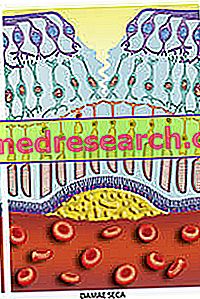
Physicians define adherence as a band of fibrous-cicatricial tissue that forms behind tissues and internal organs.
Abdominal adhesions are bands of fibrous-cicatricial tissue that "stick" to each other the tissues and organs of the abdomen on which they develop.
This not only alters the normal anatomy of internal abdominal structures, but also affects their functionality.
In most cases, the adhesions are located at the level of the intestine, because the latter has numerous areas folded back on itself and in close contact.
In most cases, abdominal adhesions appear after a surgical procedure performed in the abdominal or pelvic area.
According to some estimates, 93% of surgical operations performed on the abdomen / pelvis causes the appearance of adhesions, even many years later.
Although it occurs more rarely, abdominal adhesions can also form due to: severe appendicitis, ulcerative colitis, endometriosis, severe infectious gastroenteritis, congenital tissue abnormalities, sexually transmitted diseases (gonorrhea, chlamydia, etc.).
Most likely, the processes leading to the formation of fibrous-scar tissue are inflammatory in nature.


